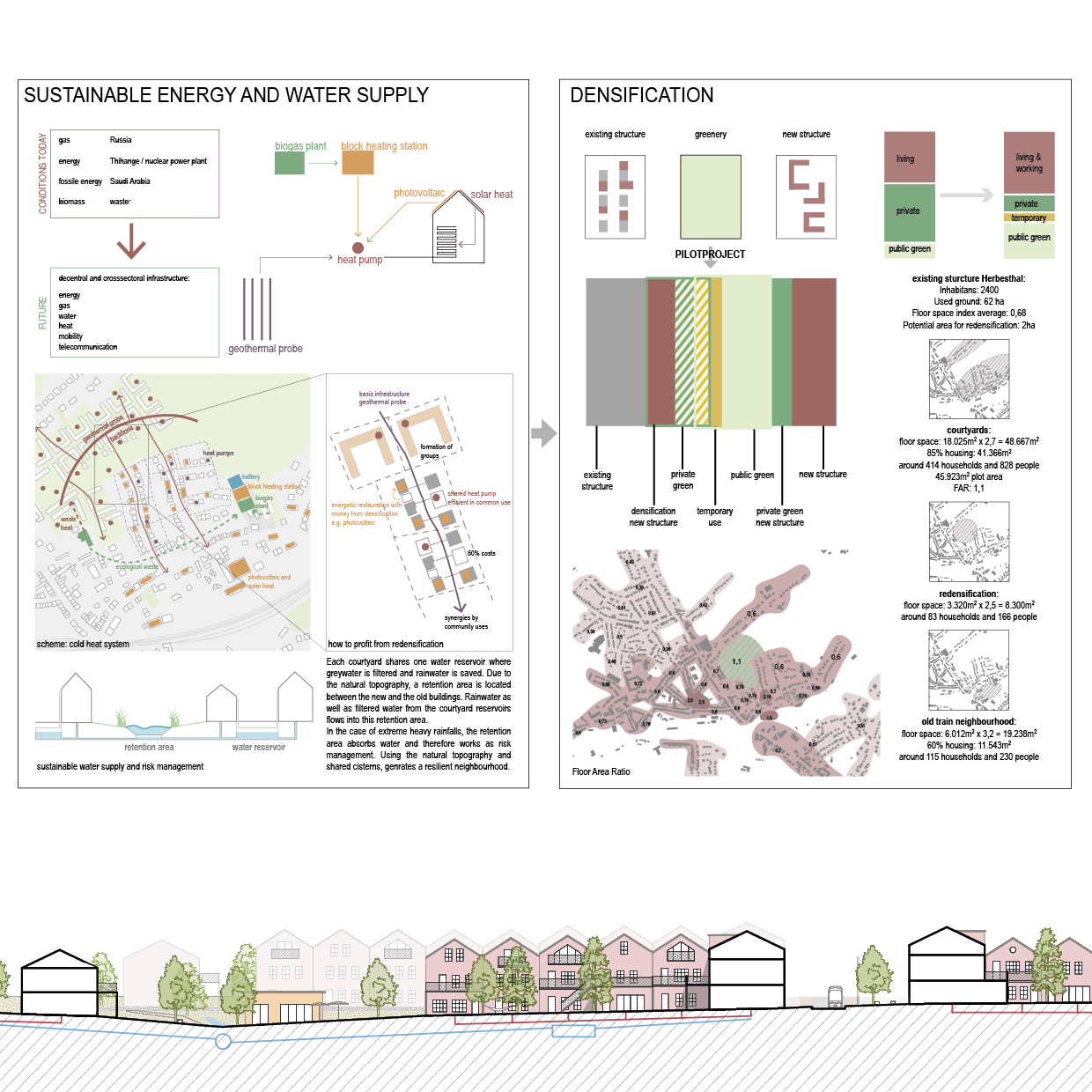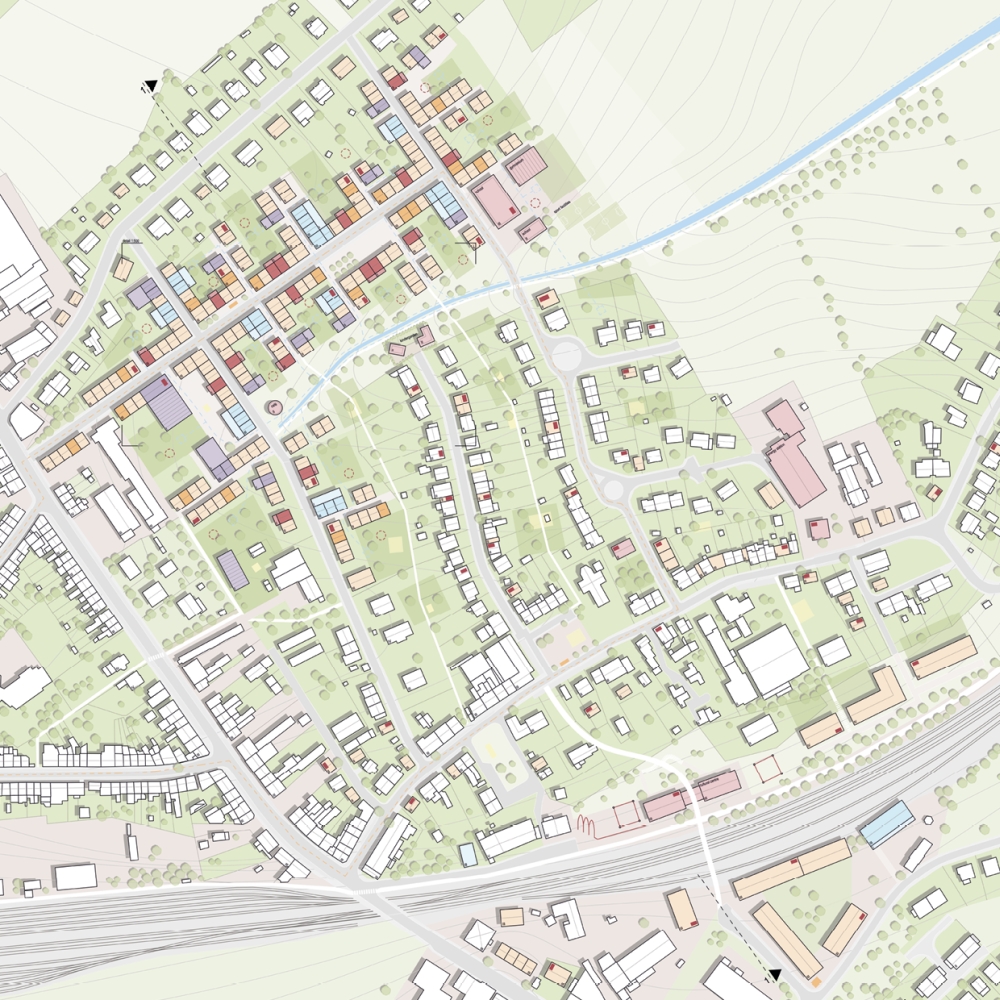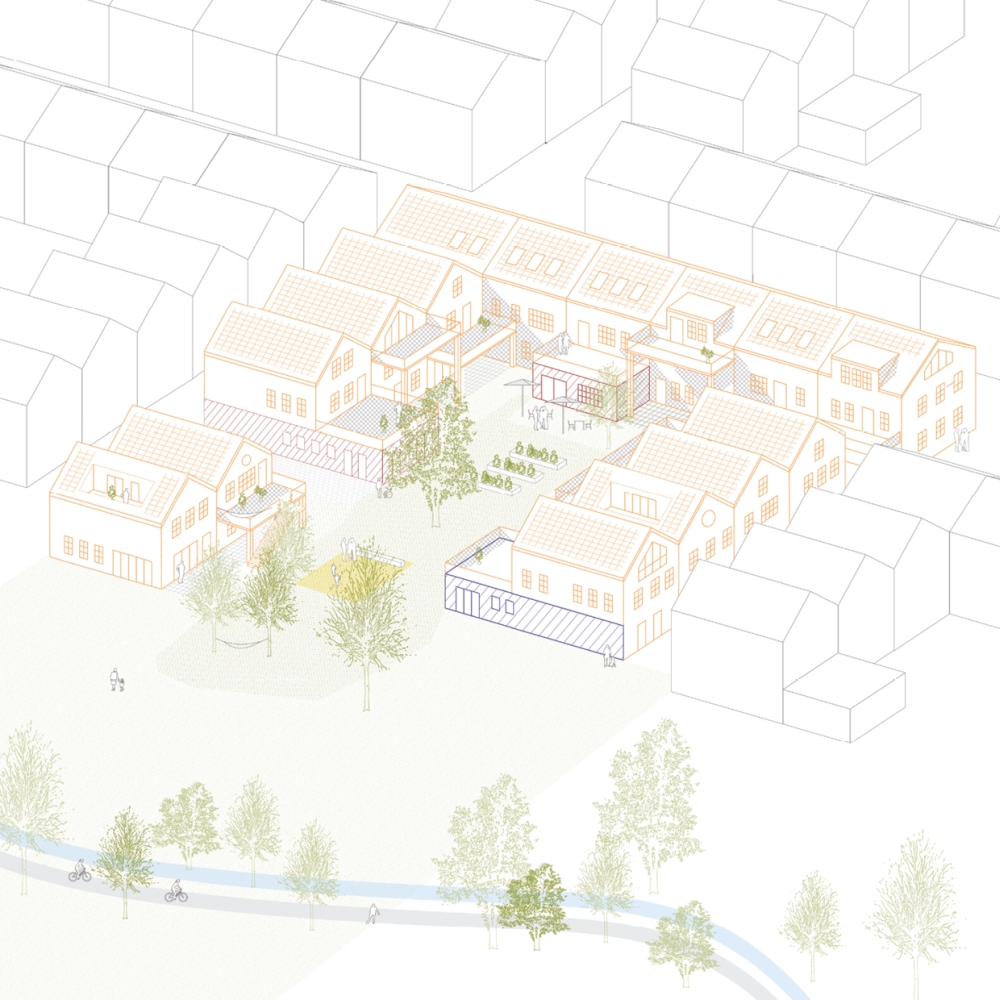Linked Analysis of Built Environment and Demographic Data – Case Study of Mönchengladbach and Jüchen
A project by Marie-Theres Kewitz and Larissa Böhrkircher
Research Module: L’EAU – Laboratory for European Augmented Urbanism II
Lecturers: Univ.-Prof. Dipl.-Ing. Christa Reicher, Canan Çelik and Antonia Stratmann
summer semester 2020
The project was conducted in the context of a faculty-wide research on the Rhenish lignite mining region, the “Rheinisches Revier”, in Germany. The research explored building typologies found in Mönchengladbach and Jüchen, and their linkage to usage, demographic structures, and rent price level. Using a figure ground map, building structures were examined and defined by assigning different colours. To characterize the typologies further, examples of the previously colored building structures were located in the city plan and compared to each other. Then an abstract pattern was developed, that included the characteristic features of each typology.
The pattern consists of the individual building structure and street layout. On this basis and with reference to pictures of the actual urban situation typological sections for each type were developed. The result was then related to the insights from the statistical analysis on demography and rent price level. This was done to detect if there was a correlation between building typology and the average price point, age of inhabitants, their socio-economic status, family status, migration background, and the timeframe in which the building is inhabited by the same household. In a last step, the usage was derived from a land use analysis. In conclusion, the work at hand provides a method to relate statistical data to the built environment and contributes to the discussion about the future of the Rhenish lignite mining area.




